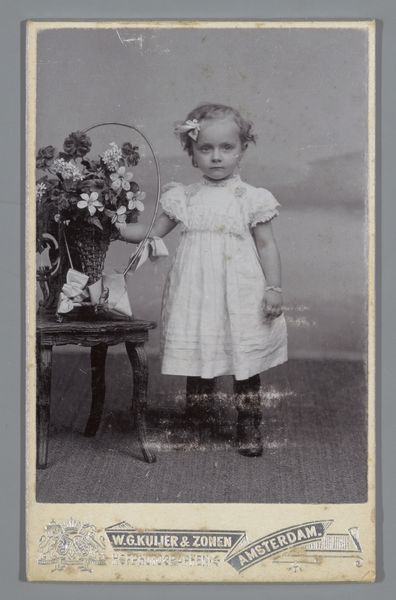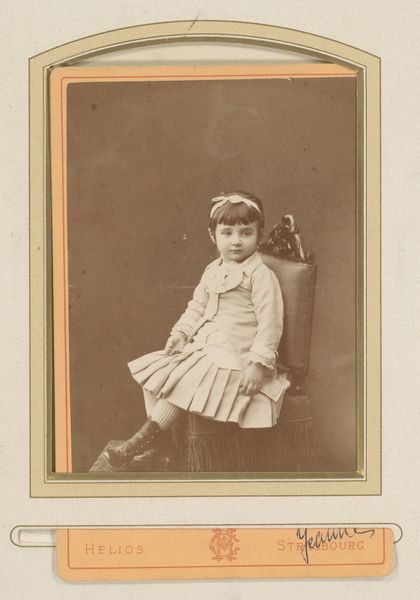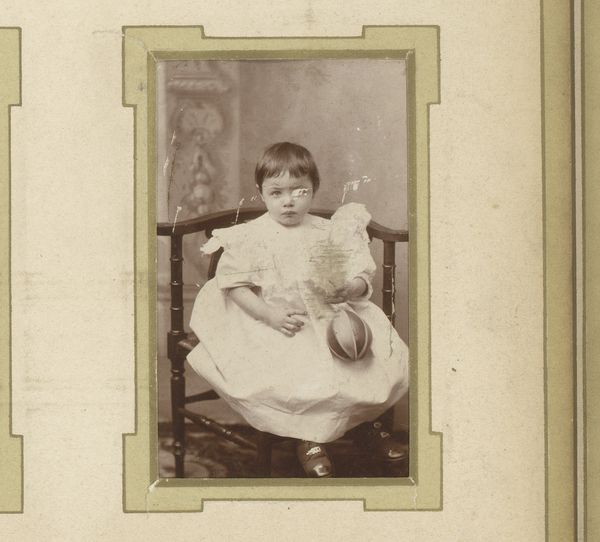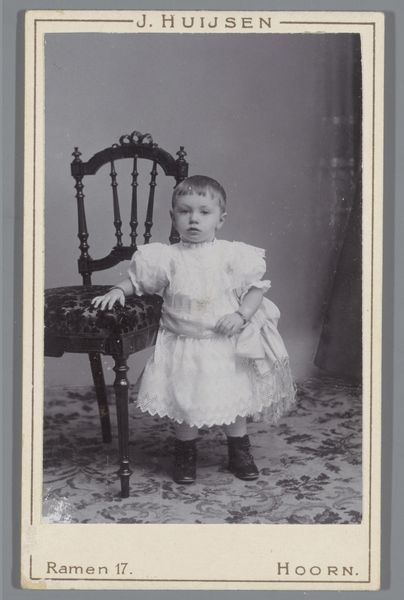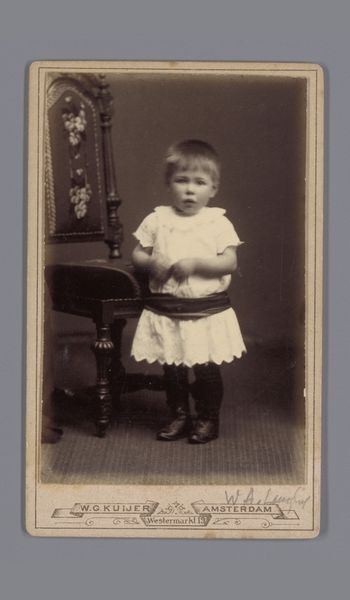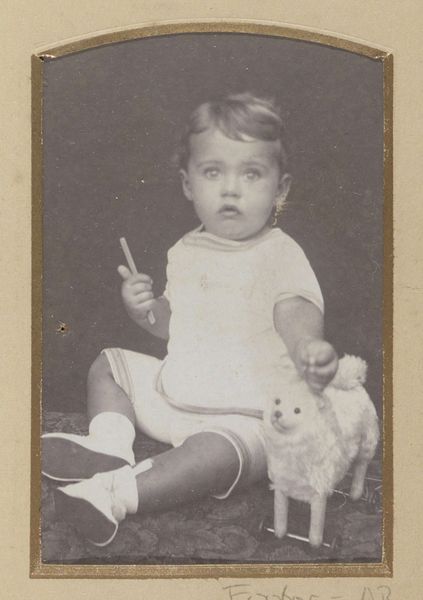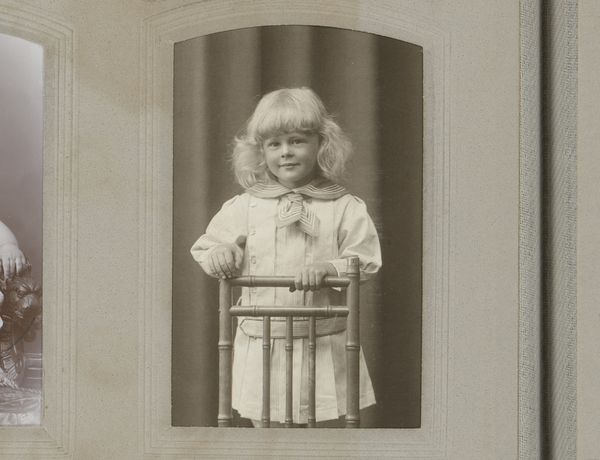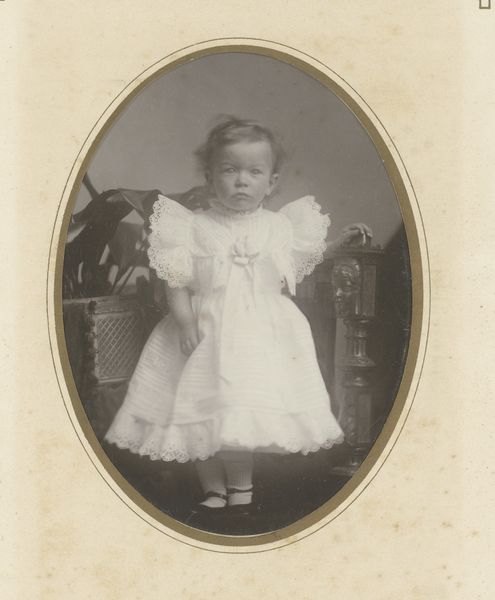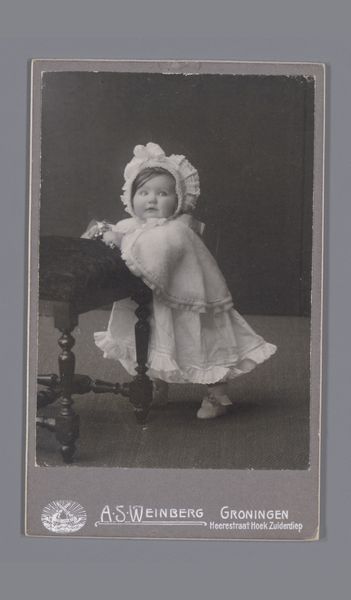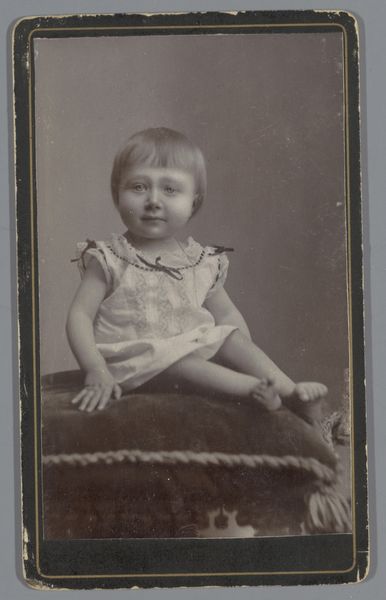
paper, photography, gelatin-silver-print
#
portrait
#
still-life-photography
#
pictorialism
#
paper
#
archive photography
#
photography
#
historical fashion
#
gelatin-silver-print
#
paper medium
Dimensions: height 105 mm, width 62 mm
Copyright: Rijks Museum: Open Domain
Curator: The sepia tones immediately draw you in, don't they? Editor: They do. There’s a warmth, but also a wistfulness…like peering into a half-forgotten dream. Curator: Indeed. What we have here is a gelatin silver print from 1909 by Anton Cornelis Thomann. It's a piece titled "Portret van een onbekend meisje, aangeduid als Mimi," or "Portrait of an unknown girl, referred to as Mimi." Editor: “Mimi”… Even that diminutive, suggestive name feels loaded. Look at the girl’s eyes. They're huge, innocent, but also a bit wary. Curator: Children's portraiture of this period operated under a different set of expectations, you know. These weren't casual snapshots. They were often staged with theatrical lighting, almost miniature formal occasions. The act of posing becomes a statement. Editor: Right, everything is so deliberately arranged. Her little white dress, the bow in her hair, even the table she’s leaning on. These accessories almost serve as talismans of childhood and of a rising middle class. White signified innocence, cleanliness, purity and therefore aspirations towards godliness through lifestyle. Curator: You're picking up on a visual language of class aspiration common at the time, aren’t you. Thomann ran a portrait studio. These images were status symbols, signifiers for a family on the rise or one wishing to cement its place in society. The Pictorialist style also romanticizes the image in its softened focus. Editor: The softened focus definitely softens the world of Utrecht at the time! There is an overall sense of fragility here. What does the styling convey about childhood itself at the time? Curator: That's the intriguing tension. Child labor was still rampant. Childhood wasn't necessarily this protected, idealized space for many families at the turn of the century, particularly in urban centers with diverse populations. The act of presenting this image— "Mimi" at her most presentable—reflects specific social hopes and tensions within Dutch society then. Editor: Seeing it framed within that light certainly darkens its charm, somewhat. Thank you for this view into that social context. It definitely resonates in considering the values placed on representations and memories!
Comments
No comments
Be the first to comment and join the conversation on the ultimate creative platform.
